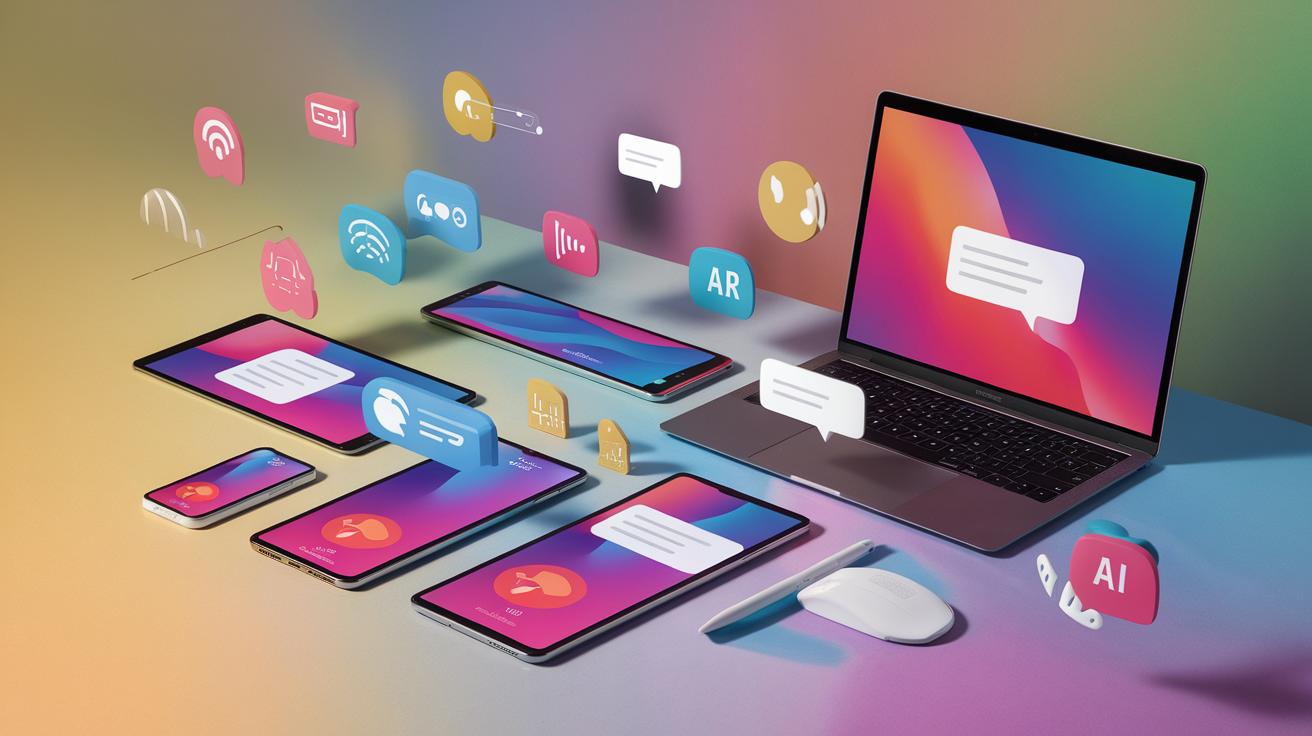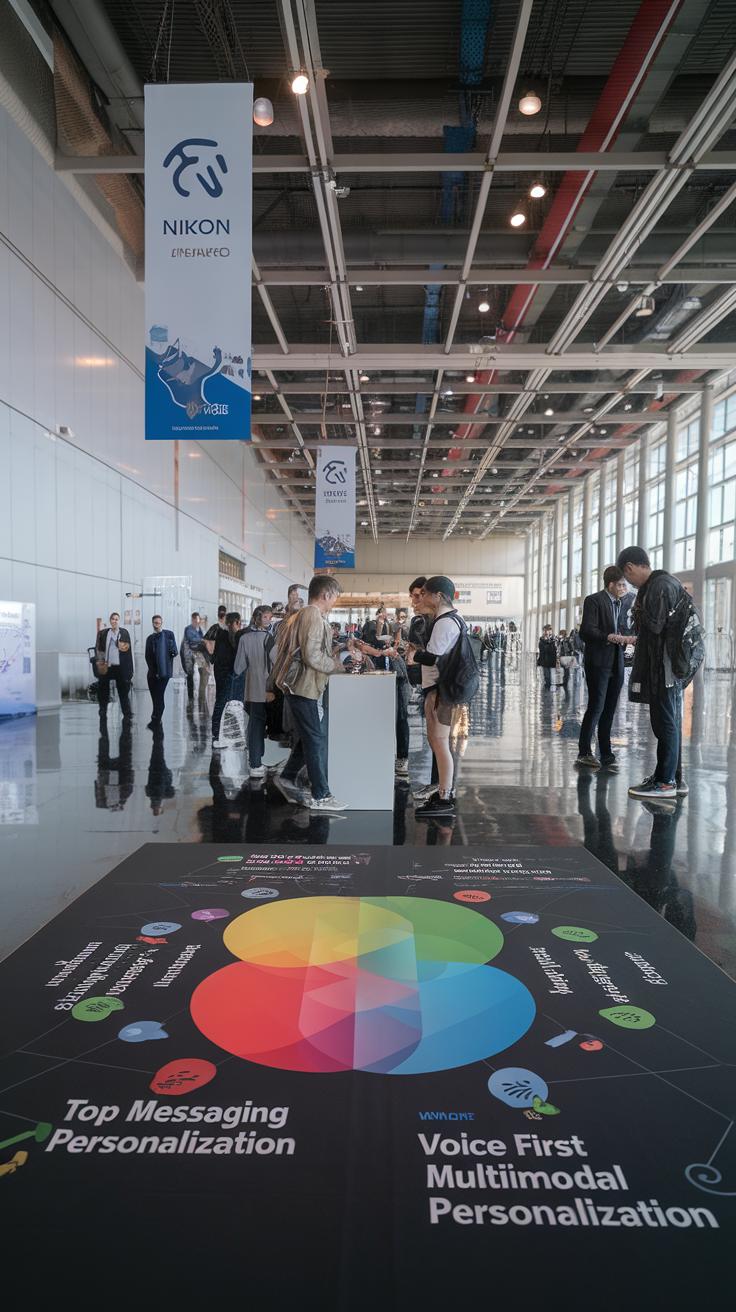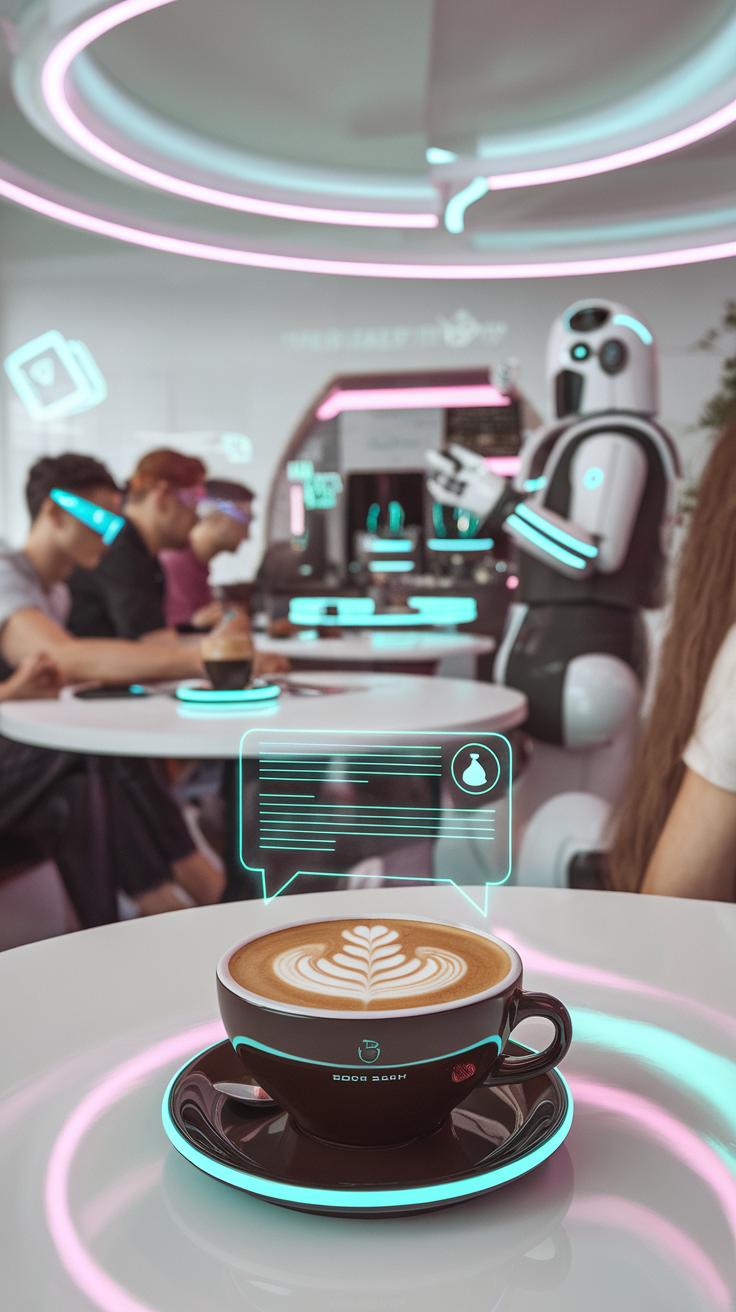Introduction
In recent years, artificial intelligence (AI) has transformed the way we communicate online. AI messaging trends shape the design and functionality of chat widgets, making them more intuitive and accommodating for users. This evolution is crucial as businesses seek to optimize customer interaction and drive engagement. Each innovation leads to new possibilities in user experience and connectivity.
As AI technologies advance, so does their integration into chat systems. This integration allows businesses to deliver personalized interactions effortlessly. Understanding the latest AI messaging trends is essential for any company looking to enhance its online customer support. This article will explore these trends and discuss how they redefine custom chat widget design. You will discover practical insights to apply in your own strategies for improved digital communication.
The Rise of AI in Communication
AI technology has rapidly changed how we communicate. It plays a key role in enhancing messaging across various platforms. Chatbots and virtual assistants now handle customer inquiries, making responses quicker and more efficient. Businesses use these tools to provide round-the-clock support, which improves customer satisfaction.
Current applications of AI messaging are effective and user-friendly. For instance, platforms like WhatsApp and Facebook Messenger incorporate AI to streamline conversations. These smart systems learn from past interactions, allowing them to predict and personalize responses. Have you noticed how certain services remember your preferences? That’s AI at work. Companies report higher engagement rates and improved sales after implementing these technologies.
Investing in AI tools can transform your communication strategy. How can you leverage AI to enhance your customer interactions today?
Trends Shaping AI Messaging
Current Trends in AI Messaging
AI messaging is becoming more sophisticated. Chatbots now respond faster and more accurately to user inquiries. They help businesses automate customer support. These bots can handle multiple conversations at once, improving efficiency. For instance, Starbucks uses a chatbot for orders, allowing customers to place their drinks in seconds. Personalized responses have also gained traction. AI can analyze user data and tailor messages to fit individual preferences. This creates a more engaging experience for users. Are you utilizing this personalization in your own chat systems? The combination of speed and personalization significantly enhances user engagement. As a result, companies see increased loyalty and satisfaction from their customers.
AI Messaging Trends Redefining Custom Chat Widget Design
The trends in AI messaging directly influence custom chat widget design. You need to consider capabilities like AI-driven conversation flow. These flows can handle various user intents, providing relevant answers based on context. Popular platforms like Zendesk showcase widgets that adapt to user behavior in real-time. Simplified interfaces are also a growing focus. Users prefer quick interactions without navigating complicated menus. Have you thought about how a clean design can improve functionality? Incorporating elements like quick reply buttons or emoji reactions makes the experience more appealing. Customizable chat widgets that reflect your brand voice encourage deeper connections with users, making them more likely to engage.
Designing Custom Chat Widgets
Custom chat widgets serve as a direct line between businesses and customers. They play a vital role in shaping user interactions on websites and apps. By providing instant support, these widgets enhance user experience and foster engagement. You can think of them as a friendly guide, ready to assist visitors at any moment.
When designed effectively, custom chat widgets improve conversion rates and customer satisfaction. For instance, businesses can personalize conversations based on user behavior, making interactions feel more relevant. Imagine a customer receiving tailored suggestions based on their previous purchases. This level of attention leads to higher engagement and loyalty.
Consider how your business can implement a custom chat widget. What features would enhance user interactions? Could you integrate AI to offer 24/7 support? These questions can help you design a widget that not only meets customer needs but also drives business growth.
Integrating AI into Chat Widgets
Integrating AI into custom chat widgets transforms the way businesses interact with customers. Advanced machine learning algorithms power these widgets, allowing them to understand and respond to user inquiries more accurately. This technology enables natural language processing (NLP), which helps the widget recognize different phrases, dialects, and even emotions. Your customer can ask questions in their own words, and the AI will usually provide relevant answers.
Chat widgets equipped with AI can learn from each interaction. For example, if a client frequently asks about product availability, the system can prioritize these responses in the future. This adaptability makes the interaction feel more personal and efficient. Consider the potential: how would your support services improve if your chat widget could anticipate customer needs before they even ask?
User Experience and AI Messaging
Importance of User Experience in AI Messaging
User experience plays a key role in AI messaging. A smooth interaction keeps customers engaged and satisfied. When you design chat widgets, think about how users navigate these tools. Can they find answers quickly? Is the layout intuitive? Simple prompts can guide users effectively, reducing frustration.
For example, incorporating buttons for common inquiries can save time. Shoppers often appreciate a quick response when they ask about order status. If they must search through menus or wait for a reply, they may leave the site. Prioritizing user experience in your design can lead to higher conversion rates.
Chat Widgets and Seamless Communication Flow
Chat widgets are vital for effective communication. They serve as a bridge between customers and businesses. You want to ensure these widgets respond accurately and swiftly to inquiries. This creates a sense of efficiency and trust. If customers feel valued, they are more likely to return.
Consider utilizing AI for personalized experiences. By remembering past interactions, your chat widget can offer tailored suggestions. This instant recognition helps customers feel understood. How does your current design facilitate this? Take a moment to evaluate its effectiveness in providing a seamless communication flow.
Security Concerns in AI Messaging
AI messaging poses unique security risks that can impact businesses and customers. Data breaches and unauthorized access to user information are major concerns. For instance, a poorly designed chat widget might expose personal data, leading to identity theft. Ransomware attacks can also target AI systems, disrupting services and harming your reputation.
To mitigate these risks, you must implement robust security measures. Use end-to-end encryption to protect conversations and data during transmission. Regular software updates can fix vulnerabilities in real-time. Conduct security audits to assess potential weaknesses in your chat widget design. Educating your team on security best practices fosters a culture of safety. What protocols do you currently have in place to safeguard your messaging systems?
Consider involving third-party security experts for thorough assessments. Their insights can help identify overlooked risks. Your commitment to security reassures customers that their data is safe. Trust is essential in maintaining long-term relationships. What steps will you take to enhance your AI messaging security?
Future Trends in AI Messaging
AI Messaging Trends Redefining Custom Chat Widget Design
AI messaging will continue to shape chat widget design. Expect widgets that learn from user interactions. They will adapt to individual preferences over time. For instance, a widget may offer personalized suggestions based on past conversations. This could lead to quicker resolutions for customer queries.
Voice recognition is another trend to watch. Imagine a chat widget that allows voice commands. You might ask for assistance without typing a single word. This feature could improve accessibility for many users.
Another possibility lies in integration with other platforms. Widgets may connect seamlessly with social media or email. This would provide a unified experience across different channels. How can your business leverage this cross-channel capability?
Consider the role of augmented reality. Widgets may incorporate AR features, allowing customers to see products in their environment before making a purchase decision. How would this change the way you engage with clients?
Implementing AI Messaging Strategies
Actionable Steps for Effective Implementation
Focus on understanding your audience. Identify their needs and preferences. Use surveys or data analysis to gain insights. This knowledge guides your AI messaging strategy.
Incorporate natural language processing. This lets your chat widget understand and respond to user inquiries more effectively. Users appreciate straightforward communication.
Set clear objectives for your AI messaging. Define what you want to achieve. For example, do you aim to boost sales, enhance customer service, or gather user data? Clear goals simplify your efforts.
Monitor performance regularly. Analyze chat data to see which interactions are successful. Look for areas of improvement. Adjust your strategies based on findings.
Train your team in AI tools. Ensure they know how to utilize the technology effectively. A well-informed team can make the most of your AI messaging.
Consider user feedback. Provide ways for customers to share their thoughts on the chat experience. Use this information to refine your approach.
Think about integrating AI with other tools. Connecting your chat widget to CRM systems can lead to better customer insights and communication.
Stay updated on AI advancements. The field evolves rapidly. Keeping informed allows you to leverage new capabilities and stay ahead.
Case Studies in AI Messaging Design
Successful Integrations of AI Messaging
Several companies have effectively used AI messaging to enhance their chat widget design. For instance, a retail brand saw a 35% increase in customer satisfaction after integrating an AI-powered chatbot. This chatbot provided instant responses to common questions, reducing wait times. Customers appreciated the quick answers, which built trust.
Another example is a healthcare provider that implemented AI to schedule appointments. Patients could use the chat widget to book their visits at any time. This integration led to a 40% decrease in missed appointments. How does your current system support event scheduling?
In both cases, these organizations learned that AI can automate tasks and improve customer interaction. Adapting AI messaging in your widget could drive similar results. What insights can you apply to your design approach?
Measuring Success with AI Messaging
Measuring the effectiveness of your AI messaging strategies is vital. Focus on specific metrics to understand user engagement and satisfaction. Start with response time. Fast replies often result in happier customers. Track the number of chats initiated versus resolved. This can show you how well your widget addresses user needs.
Next, analyze customer feedback. Look at ratings and comments after chat interactions. This feedback helps you spot areas for improvement. You might also want to monitor conversion rates. Are users taking desired actions after chatting? A rise in sign-ups or purchases indicates success.
Engagement metrics like session duration are important too. Longer interactions may suggest users find the chat helpful. Lastly, consider repeat interaction rates. If users return, they likely value the experience. How will you implement tracking for these metrics in your design? Your next steps can shape more effective AI messaging strategies.
Conclusions
AI messaging trends are reshaping how businesses interact with customers through chat widgets. The integration of advanced AI technologies into these tools leads to more personalized and efficient communication. Recognizing these trends is vital for staying competitive in a rapidly evolving market. You will better serve your customers by leveraging these insights.
As we look to the future, the focus on AI-driven innovations will only grow. Embracing these changes will enhance your chat widget’s design and improve user experiences significantly. Stay informed and adaptive to ensure your business remains at the forefront of customer engagement strategies. Your dedication to innovation will foster stronger relationships between your brand and your audience.























